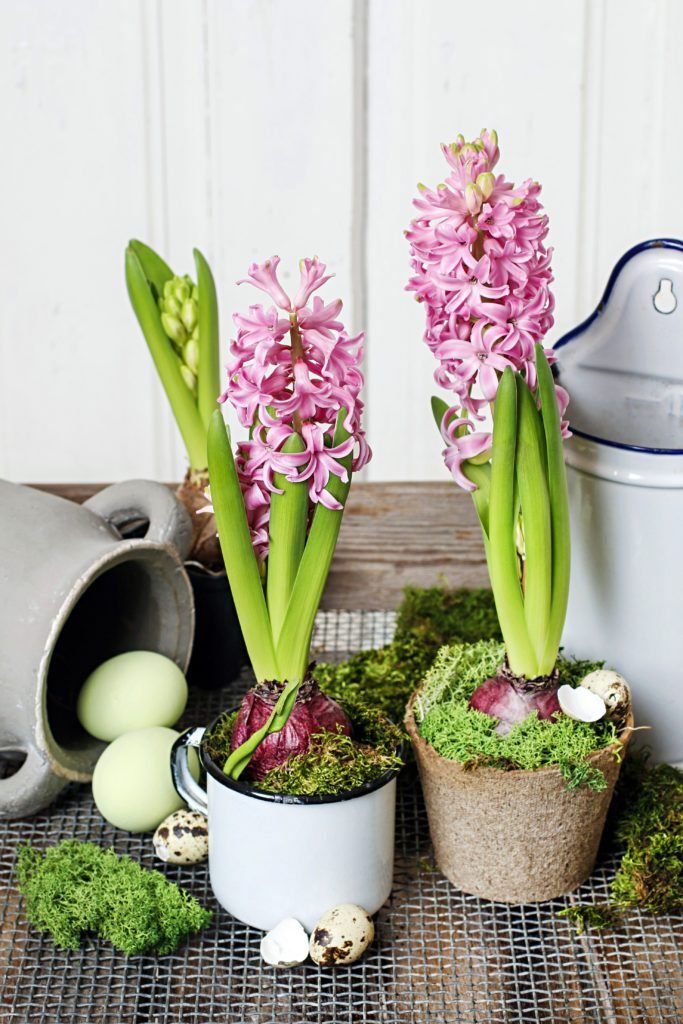When To Plant Hyacinth Bulbs For Beautiful Spring Blooms

Table of Contents
Understanding Hyacinth Bulb Planting Zones
The success of your hyacinth bulbs hinges on understanding planting zones. These zones, based on average annual minimum temperatures, dictate the ideal planting time for various plants, including hyacinths. Planting too early exposes bulbs to frost damage, while planting too late might prevent them from establishing strong roots before winter.
-
North America (USDA Hardiness Zones): These zones range from 1 (coldest) to 13 (warmest). Planting times vary significantly. For example, zones 6-8 generally plant hyacinth bulbs in September to October, while colder zones (3-5) might plant in late September to early October, allowing for sufficient root establishment before the ground freezes.
-
European Planting Zones: Similar zoning systems exist in Europe. Consult your local gardening resources or weather data for precise planting times based on your specific location within the European zones. These zones will typically mirror the recommendations for North American zones with similar temperatures.
-
Factors influencing planting time within a zone: Microclimates, soil drainage, and elevation can impact your local planting conditions. For instance, a location with excellent drainage in zone 7 might allow for slightly earlier planting than a poorly-drained area within the same zone.
| Zone | North America (Approximate Planting Time) | European Equivalent (Approximate Planting Time) |
|---|---|---|
| 3-5 | Late September - Early October | Similar to North America |
| 6-8 | September - October | Similar to North America |
| 9-10 | October - November | Similar to North America |
The Ideal Timing for Planting Hyacinth Bulbs
Fall planting is crucial for spring hyacinth blooms. During autumn, the bulbs establish strong root systems while the soil is still relatively warm. This preparation ensures robust growth when spring arrives.
-
Autumn planting (September-November in many regions): This timeframe generally allows for optimal root development before the soil freezes. The exact dates will depend on your specific hardiness zone and local climate.
-
Soil temperature considerations (ideally 50-60°F or 10-15°C): The soil should have cooled sufficiently after the summer heat. Aim for a temperature range that encourages root growth without stimulating premature sprouting.
-
Early planting vs. late planting: Planting early gives the bulbs more time to establish themselves, leading to potentially larger blooms. However, late planting might still result in flowers, though possibly smaller ones, if the soil isn’t frozen. Always err on the side of slightly earlier rather than later planting to ensure the bulbs have a chance to settle before winter.
Preparing the Soil for Hyacinth Bulbs
Hyacinth bulbs thrive in well-drained soil. Poor drainage can lead to rot, preventing blooming. Prepare your soil accordingly.
-
Soil testing and amendments (e.g., compost, peat moss): A soil test identifies any pH imbalances or nutrient deficiencies. Amend heavy clay soils with organic matter (compost, peat moss) to improve drainage and aeration. Sandy soils may benefit from the addition of organic matter to improve water retention.
-
Ensuring proper soil pH: Hyacinths prefer slightly acidic to neutral soil (pH 6.0-7.0). Adjust the pH if necessary using lime (to raise pH) or sulfur (to lower pH).
-
Removing weeds and debris before planting: Clear the planting area of weeds and debris to prevent competition for nutrients and moisture.
Planting Hyacinth Bulbs: A Step-by-Step Guide
Planting hyacinth bulbs is straightforward, but proper technique ensures optimal growth.
-
Digging holes of appropriate depth: Dig holes twice the depth of the bulb. For larger bulbs this could be 6-8 inches deep.
-
Spacing bulbs for optimal growth and air circulation: Space bulbs about 4-6 inches apart to allow for adequate air circulation and prevent overcrowding.
-
Planting orientation (pointed end up): Plant the bulbs with the pointed end facing upwards.
-
Watering after planting: Gently water the bulbs after planting to settle the soil around them.
Aftercare for Hyacinth Bulbs
Post-planting care is crucial for healthy hyacinth growth and abundant blooms.
-
Regular watering, avoiding overwatering: Water regularly, especially during dry spells. Avoid overwatering, as this can lead to rot.
-
Mulching to protect bulbs and retain moisture: Apply a layer of mulch (2-3 inches) over the planting area to help retain moisture, regulate soil temperature, and suppress weeds.
-
Fertilizing (optional) during the growing season: A balanced fertilizer can promote stronger growth, but it's not essential for blooming.
Conclusion
Successful spring hyacinth blooms depend on a combination of factors: choosing the right time to plant hyacinth bulbs, preparing the soil optimally for good drainage, and providing appropriate aftercare. Remember to consider your planting zone when determining the ideal planting time for your hyacinth bulbs. Start planning your spring garden now! Choose the right time to plant your hyacinth bulbs to enjoy a spectacular display of blooms next spring. Learn more about hyacinth bulb varieties and planting techniques [link to relevant resource].

Featured Posts
-
 O Tom Morello Kai I Kritiki Toy Kata Toy Trump I Sygkrisi Me Ton Springsteen
May 29, 2025
O Tom Morello Kai I Kritiki Toy Kata Toy Trump I Sygkrisi Me Ton Springsteen
May 29, 2025 -
 Paasvuren Drenthe Geannuleerd Door Droogte
May 29, 2025
Paasvuren Drenthe Geannuleerd Door Droogte
May 29, 2025 -
 Choosing The Best Office Chair In 2025 Your Complete Guide
May 29, 2025
Choosing The Best Office Chair In 2025 Your Complete Guide
May 29, 2025 -
 Arcane Spoiler Jinxs Survival And Final Moments
May 29, 2025
Arcane Spoiler Jinxs Survival And Final Moments
May 29, 2025 -
 Pcc Reopens Downtown Seattle Location A Modern Market Experience
May 29, 2025
Pcc Reopens Downtown Seattle Location A Modern Market Experience
May 29, 2025
